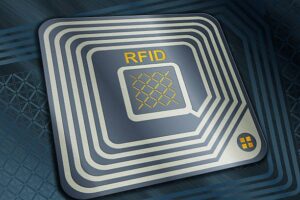RFID Tags Are Used to Track Assets
Radio Frequency Identification (RFID) tags are used by businesses to track assets from one end of their supply chain to the other. Technology is a great way to ensure your equipment works appropriately without getting stolen or lost.
RFID has many benefits that can help your business save time and money. Here are a few of them:
They’re Faster
RFID tags can detect and read assets faster than other labels, such as QR codes. This is a great benefit for tracking and managing assets that are in transit, like trucks and buses.
 In addition, active RFID systems can be much more accurate than passive ones. This means you can communicate with your assets while they are on the move, which can be invaluable for tracking inventory.
In addition, active RFID systems can be much more accurate than passive ones. This means you can communicate with your assets while they are on the move, which can be invaluable for tracking inventory.
There are three main kinds of active RFID tags: low frequency (LF), high frequency (HF), and ultra-high frequency (UHF). All have varying reading ranges and data transfer rates. LF and UHF tags can be read at distances of about 1 ft and up to several meters, respectively.
They’re More Accurate
RFID tags track assets and inventory, enabling businesses to keep tabs on supplies and equipment. Automating tracking items and purchases can help them save time and money.
While barcodes are still widely used in retail, RFID is gaining popularity due to its many benefits over traditional tracking methods.
By scanning tags, employees can quickly find an item and determine whether it has been damaged or stolen. This can prevent theft and lower shrinkage in a store.
In addition, RFID can be used to track product and asset movement throughout a warehouse or data centre. This can be valuable for companies with thousands of SKUs wanting to know each product’s location.
They’re Easier to Manage
RFID tags are a part of the Automatic Identification and Data Capture (AIDC) technology, which can be used to track items that have been tagged with them. A reader detects the tag, processes the data and then sends it to a database or application where it can be evaluated.
One of the most significant advantages of RFID tags over barcodes is their ease of management. Because they do not require a direct line of sight, readers can scan multiple tags simultaneously and at a far greater distance than barcodes. RFID also has the advantage of updating data in real time, making it more flexible and valuable. This is especially helpful for tracking large quantities of items and can help improve inventory accuracy.
They’re More Secure
RFID tags are often used for tracking assets, such as trucks and containers. This can help companies improve inventory visibility and increase the efficiency of warehouse operations.
However, this type of technology is not immune to security threats. Hackers have found ways to scan RFID tags and get the information they contain. Fortunately, most modern Internet of Things (IoT) technologies have built-in encryption that prevents hackers from eavesdropping on the data sent between the reader and the tag.
For even more security, challenge-response authentications can be employed. This system uses cryptographic algorithms to compute data, and both the reader and the tag have a unique key that will decipher this code.
They’re More Affordable
RFID tags are more affordable than barcode labels. However, they’re also more expensive to implement and require a reader and antenna that are ten times more expensive than barcode scanners.
Retailers can use RFID tags to track various assets, including inventory, tools, IT equipment, etc. These devices also improve employee safety by limiting access to certain areas and helping to prevent theft. In addition, RFID can enable new customer experiences and streamlined operations. For example, Decathlon, a sports-equipment retailer, has tagged more than 85.0 per cent of items in its stores, tripling labour productivity and cutting stockouts to raise revenue by 2.5 per cent.
RFID Tags and Their Uses
RFID tags are a form of radio frequency identification used to track equipment and assets within facilities. Typically made of plastic and containing microchips, the tag is attached to a purchase and transmitted to a central data collection system using radio waves.
Retailers use RFID to improve inventory accuracy and stock reliability. In addition, it reduces cycle count time and automates reordering products at safety stock levels, which saves companies money and improves customer satisfaction.
Lululemon uses RFID to keep track of its products and show customers where a specific product is in the store. It also helps ensure that the right product is in stock and reaches the customer at the right time so that they can buy it quickly and easily.
